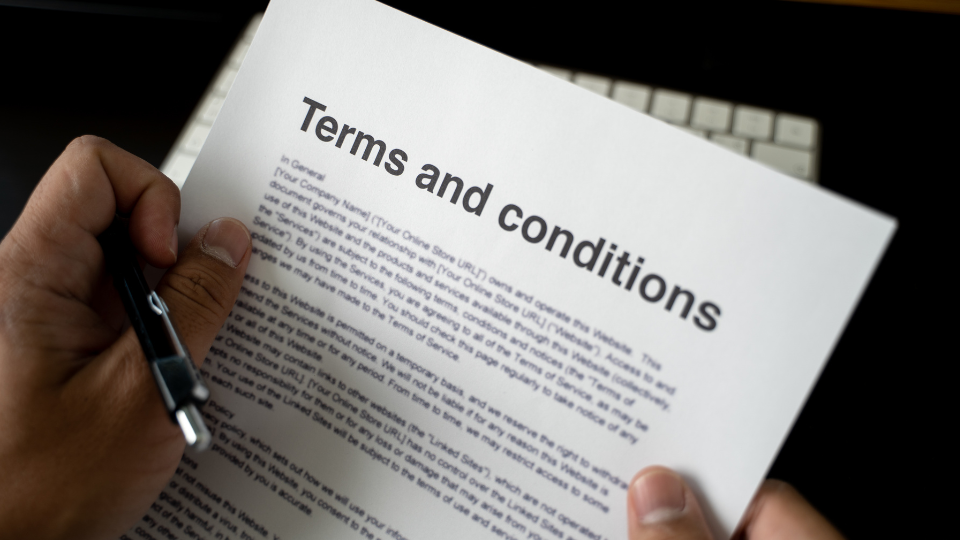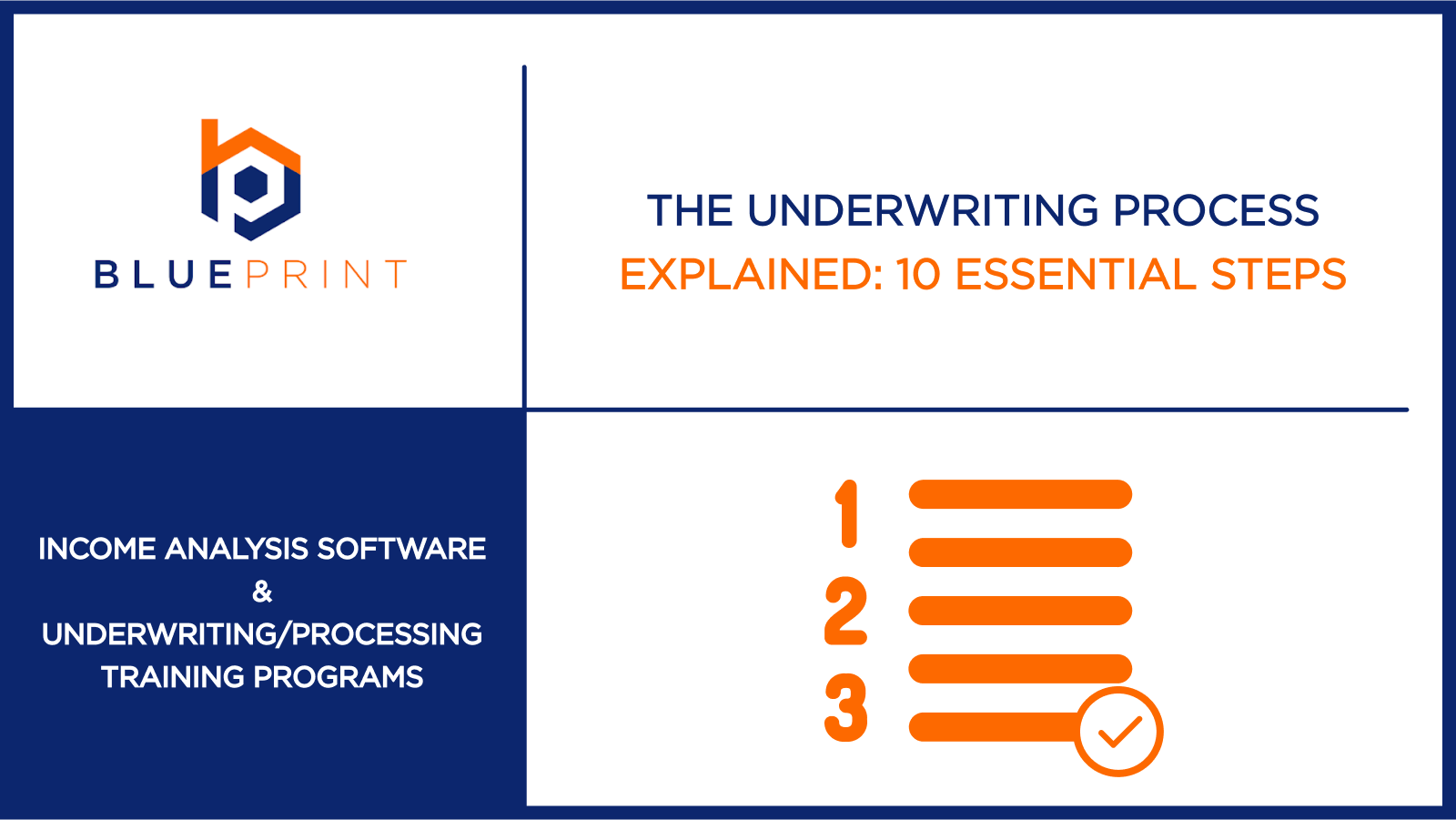As a lender, the mortgage underwriting process is one of the key components of your lending operations. If you’re making loans for home purchases, refinancing existing mortgages, or issuing home equity loans or second mortgages, effective underwriting is a must.
This guide offers a clear overview of the key steps in the mortgage underwriting process—from application review through to the final decision—along with required documentation and best practices. Plus, we will explore how tools like IncomeXpert can help automate income analysis, reduce manual errors, and support more efficient, compliant underwriting workflows.
Main takeaways from this article:
- The mortgage underwriting process is crucial for determining a borrower’s eligibility for a loan.
- Each step in the underwriting process, from initial review to final mortgage approval/denial, plays a vital part in mitigating financial risk.
- Big data and technology have improved fraud detection, error reduction, and loan processing times.
- Automation tools like IncomeXpert play a significant role in reducing processing times and enhancing accuracy.
What is mortgage underwriting?
Mortgage underwriting is the process of comprehensive evaluation that a lender undertakes to assess a borrower’s creditworthiness and the risk associated with lending them a specific loan amount for a particular property. It involves a thorough examination of the borrower’s financial background, including their income, assets, debts, and credit history, as well as an assessment of the property itself. The goal of underwriting is to determine if the borrower has the capacity to repay the loan and if the property provides adequate security for the investment.
What does a mortgage underwriter do?

A mortgage underwriter’s job is to verify the borrower’s information and protect the lender from risk. To do this, they typically:
Determine default risk
One of the most important steps in the mortgage underwriting process is thoroughly evaluating the borrower’s financial profile. Mortgage underwriters carefully scrutinize this information to gauge the likelihood that a borrower will default on their loan. This includes analyzing credit scores, payment history, and overall financial stability.
Assess and verify financial statements
Underwriters verify the accuracy and authenticity of financial documents such as income statements, bank records, and tax returns. This step ensures that the borrower’s reported financials are consistent, legitimate, and aligned with lending guidelines.
Decide whether to approve a loan
Based on their comprehensive analysis, the underwriter makes the final determination on whether to approve or deny the loan application. This decision is grounded in established lending guidelines and a careful evaluation of the associated risk.
Ensure correct paperwork submission
Underwriters verify that all required documentation has been submitted accurately and completely. They may request additional information or clarification from the borrower to ensure a thorough understanding of their financial situation.
10 steps of the mortgage underwriting process

The mortgage underwriting process is a series of evaluations for lenders to check the borrower and the property, mitigating risks and facilitating responsible lending. Here are the key steps involved:
1. Initial mortgage application review or “Read The Story”
The process begins with the lender receiving the borrower’s completed mortgage application. First, the underwriter reviews the loan type request. Since each agency may have different requirements, the underwriter must review the application with the correct loan program in mind.
The underwriter then reviews this application for completeness and accuracy, identifying any missing information or inconsistencies that need to be addressed. This step sets the foundation for the subsequent, more detailed analyses.
2. Credit review
The credit review step involves a preliminary assessment of the borrower’s creditworthiness based on the information provided in their initial application.
The underwriter will pull the borrower’s credit report from one or more credit bureaus to examine their credit score, payment history, outstanding debts, and any public records. This provides an early indication of the borrower’s ability to manage debt.
3. Debt Review
Debt analysis typically happens alongside the credit review, with a focus on how much debt the borrower carries. This is key for underwriters to confirm because home payments are one of the largest debts most borrowers carry, and putting someone into a payment that’s too high increases the risk of default.
The underwriter will look at the fixed debts, like car payments, personal loans, and child support, followed by revolving debts such as credit cards, short-term credit lines, and required dues or fees. Student loans are reviewed separately, as they may be deferred, in default, or qualify for exclusion, depending on how the payment is structured and what the guidelines allow.
4. Employment verification and income analysis
Verifying a borrower’s employment and analyzing their income is a critical part of assessing repayment capacity. Underwriters rely on documentation such as pay stubs, W-2s, tax returns, and third-party verification services to confirm job status, income consistency, and overall stability.
This step can become especially complex when borrowers have fluctuating income, multiple income sources, or are self-employed. IncomeXpert helps streamline this process by automatically extracting and analyzing income data from various documents, flagging inconsistencies, and ensuring calculations align with lending guidelines, allowing underwriters to make faster, more accurate decisions.
5. Debt-to-income ratio (DTI) calculation
Once income and debts have been reviewed, the underwriter calculates the borrower’s debt-to-income (DTI) ratios, which compare their total monthly debt payments to their gross monthly income. Typically, two ratios are considered:
- Front-end DTI (housing expenses as a percentage of income)
- Back-end DTI (total debt payments, including housing, as a percentage of income)
These ratios help the lender assess the borrower’s ability to manage their monthly obligations.
6. Asset verification
This step confirms the borrower’s liquid assets, such as savings accounts, checking accounts, and investment accounts.
The underwriter will request bank statements and other financial records to verify the source and availability of funds for the down payment, closing costs, and reserves. Adequate assets demonstrate the borrower’s financial stability beyond their regular income.
7. Property underwriting
Once you have completed steps one through five, this will show you the borrower has the ability to “borrow” the funds. The second part of mortgage lending is collateral to secure the loan. To ascertain the property’s market value and condition, the lender will typically order an appraisal conducted by a licensed appraiser. The appraiser provides an objective opinion of the property’s worth based on comparable sales in the area.
In some cases, a property inspection may also be required to identify any structural issues or necessary repairs that could affect the property’s value or the lender’s security.
8. Company policy review
This step allows the underwriter to review any additional company-specific requirements, such as second mortgage guidelines, condo project approvals, or other unique lending scenarios. While most issues are addressed in earlier steps, this part of the process often requires a more holistic view of the loan file.
The underwriter must ensure the loan meets internal company rules, agency guidelines, secondary market requirements, and any applicable government regulations before proceeding. This review helps confirm that all risk factors have been considered and that the loan remains compliant on every level.
9. Risk assessment and mitigation
Throughout the underwriting process, the underwriter continuously assesses the overall risk associated with the loan. They consider all the information gathered, including the borrower’s creditworthiness, financial stability, and the property’s characteristics.
They also verify that all borrower data is accurate and free of fraud. Today’s mortgage underwriters have some of the best systems available to complete “cross checks” for many points of the loan review. Our current fraud systems validate social security numbers, previous address, employment history, and property data with the push of a button.
10. Submit to AUS and update loan status
Once the loan documents have been reviewed, updated, and properly organized, the underwriter submits the file to the Automated Underwriting System (AUS). The AUS will evaluate the new information and return a decision, along with any conditions or documentation requirements. Based on this assessment, the system will either issue an approval, a conditional approval, or a loan denial.
After evaluating all the factors comprehensively, the underwriter makes the final decision to conditionally approve, give final approval, or deny the loan application. If approved, the loan moves toward closing. If denied, the lender is required to provide the borrower with a written explanation for the decision.
Required documentation

The underwriting process requires the submission of complete and accurate documentation. If you have incomplete documents, it can lead to delays or denial of the loan. The following is a list of the documents required:
- Proof of identity and legal residency: This includes a driver’s license, passport, or other government-issued identification, like a green car,d to validate the borrower’s identity and legal status
- Proof of income: Pay stubs, W-2 forms, 1099 forms (for self-employed individuals), and tax returns are required for this.
- Employment verification: A formal verification letter from the borrower’s employer or the employment contract confirming their position, salary, and length of employment may be requested.
- Asset and bank statements: Recent bank statements comprising checking and savings accounts help confirm sufficient funds for the down payment and reserves.
- Credit report: This can be obtained directly by the lender, but the borrower’s authorization is required.
- Property documentation: This includes the purchase agreement, appraisal report, and homeowner’s insurance information.
- Debt documentation: The DTI is calculated using documentation regarding current debts, including credit card statements, car loans, and student loans.
- Down payment documentation: Proof of the source of down payment funds is essential to ensure compliance with lending guidelines.
How long does the underwriting process take?
The length of the underwriting process can vary widely depending on the complexity of the borrower’s financial profile, the completeness of the application, and the lender’s internal workflows. While some approvals can be completed in just a few days, others may take one to two weeks or longer, especially in cases involving manual review, incomplete documentation, or high application volume.
Lenders can reduce turnaround times by streamlining document collection, leveraging automation tools like IncomeXpert for income analysis, and maintaining efficient communication across processing and underwriting teams.
Accelerate the loan underwriting process with IncomeXpert
Underwriting is a critical part of the mortgage process, requiring detailed analysis of borrower documentation, income, credit, and risk. As this article outlined, each step—from initial application review to final loan decision—plays a key role in ensuring responsible lending. With increasing demands for speed and accuracy, lenders are turning to automation to enhance efficiency without sacrificing compliance.
IncomeXpert is built to simplify income verification and document analysis—one of the most complex and error-prone parts of underwriting. By automating calculations and aligning with lending guidelines, it helps teams reduce manual work and make faster, more consistent credit decisions.
With IncomeXpert, lenders can:
- Automatically extract and calculate income from pay stubs, tax returns, and VOEs
- Flag inconsistencies and apply standardized logic across files
- Generate audit-ready reports that accelerate underwriting reviews
Request a demo today to see how IncomeXpert can modernize your underwriting workflow.

